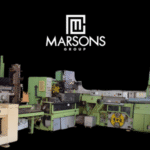The tobacco industry has long been a driving force in global manufacturing and trade. At the heart of this industry lies one critical component, often overlooked by the average consumer but essential to its growth and evolution — global tobacco machinery. This specialized sector involves the design, production, and innovation of machines that process tobacco, manufacture cigarettes, and package them for global distribution.
With technological advancements, regulatory scrutiny, shifting consumer preferences, and sustainability becoming central themes, the global tobacco machinery landscape is undergoing significant change. This blog explores how emerging trends in global tobacco machinery are shaping the industry’s future. From digital transformations to sustainability initiatives, understanding these trends is crucial for stakeholders aiming to remain competitive in this evolving market.
The Role of Global Tobacco Machinery in the Industry
Tobacco machinery forms the backbone of the entire tobacco supply chain. These machines handle everything from processing raw tobacco leaves to manufacturing and packaging finished products. Broadly, tobacco machinery includes equipment for leaf processing, cigarette making, filter production, packaging, and quality control systems.
Without advancements in machinery, the industry would struggle to meet the growing global demand for tobacco products or adhere to increasingly stringent regulatory requirements. Improvements in machinery directly impact production efficiency, cost management, product quality, and the ability to innovate in response to market trends.
Key Trends Shaping the Global Tobacco Machinery Market
The global tobacco machinery sector is evolving, driven by both internal industry dynamics and external forces. Here are the most significant trends and their implications:
1. Automation and Digitalization
The quest for efficiency and precision has led to a surge in automation and digital technologies in global tobacco machinery. Advanced machines powered by AI and IoT (Internet of Things) now dominate modern manufacturing facilities.
Why it Matters:
- Automated devices reduce human error, ensuring consistent product quality.
- Digital monitoring systems enable real-time performance tracking and predictive maintenance, minimizing downtimes.
- Manufacturers are equipped to meet high production targets without compromising cost efficiency.
For instance, robotic arms and sensors in packaging machines ensure precision, while data systems alert operators of potential machine malfunctions days ahead of time, saving both resources and money.
2. Increasing Focus on Sustainability
Sustainability has become a global priority, and the tobacco industry is no exception. Tobacco machinery manufacturers are now investing in eco-friendly equipment designs. From using energy-efficient motors to implementing waste-reduction systems, sustainability is embedded in every technical innovation.
Driving Factors:
- Heightened public awareness about environmental issues.
- Stricter government regulations on waste management and carbon emissions.
How It Shapes the Future:
Sustainable machinery helps companies improve their environmental profile and comply with global green mandates, paving the way for responsible industry practices.
3. Customization and Flexibility
Today, consumers demand personalized, varied tobacco products such as flavored cigarettes, slim-line designs, and nicotine alternatives like electronic cigarettes. This consumer-driven demand has pushed machinery manufacturers to prioritize customizable and flexible machines over one-size-fits-all solutions.
Highlights of This Trend:
- Machines are being designed to handle multiple formats and rapid production changes.
- Modular machinery allows companies to adapt to new market demands without expensive overhauls.
Customization ensures that businesses can stay competitive by quickly responding to emerging product trends, such as heated tobacco devices or flavored capsule filters.
4. Rising Demand for E-Cigarette and Vape Production Equipment
The surge in popularity of electronic cigarettes (e-cigarettes) and vaping products has created new growth areas for global tobacco machinery manufacturers. Equipment specific to mixing nicotine liquids, assembly of vape pens, and packaging of e-cigarette components is now in high demand.
Impact:
- Companies specializing in e-cigarette machinery are entering the mainstream.
- Traditional cigarette manufacturers are diversifying their portfolios to include vaping products, thereby revamping their existing production lines.
5. Regulatory Compliance Technologies
Governments worldwide are introducing stricter regulations regarding disclosure, labeling, and quality control for tobacco products. Consequently, tobacco machinery now incorporates compliance features like automated labeling systems and traceability solutions.
Examples of Compliance-Focused Machinery:
- Serialization machines to track production batches.
- Advanced sensors to measure tobacco ingredient ratios and ensure compliance with safety standards.
Regulatory technologies serve an important dual purpose, helping companies avoid hefty fines while ensuring consumer safety.
Emerging Innovations
- Augmented Reality Maintenance Tools: Operators can troubleshoot and repair machinery using AR interfaces, reducing dependency on remote technicians.
- AI-Driven Automation: Optimizes machine performance and predicts maintenance schedules.
- Fully Biodegradable Materials Handling Machines: Tailored for companies aiming to produce eco-friendly packaging solutions.
The Road Ahead for Global Tobacco Machinery
As the tobacco industry evolves, so does the machinery that powers it. Below, we highlight the outlook and growth opportunities for the sector.
1. Market Growth Projections
Industry analysts predict sustained and steady growth in the global tobacco machinery market through 2030. This growth will primarily be driven by increasing demand for e-cigarettes, emerging markets such as Asia-Pacific, and continued efforts by manufacturers to streamline processes through digitization.
2. Opportunities in Emerging Markets
Many developing economies are presenting massive growth opportunities for tobacco machinery manufacturers. Rising income levels, changing lifestyles, and a growing demand for tobacco consumption in countries like India, Indonesia, and Nigeria have fueled the expansion of machinery exports to these regions.
3. Technological Disruption Will Continue
Technology will remain a central component of the industry’s transformation. Machinery equipped with artificial intelligence, blockchain for traceability, and even cloud-based operational management will redefine how tobacco products are manufactured and distributed.
4. Collaboration Across the Value Chain
Collaboration between machinery manufacturers, tobacco companies, and regulatory organizations will be critical. Governments are introducing track-and-trace models to monitor and reduce illegal trading of tobacco products. Machinery that integrates seamlessly with traceability systems will be the game changer.
Challenges and Risks
While the prospects are promising, a few challenges could hinder the growth of global tobacco machinery, including:
- Regulatory Pressures: Constantly changing laws make it difficult for manufacturers to innovate while remaining compliant.
- Declining Smoking Rates in Some Regions: Public health campaigns and anti-smoking drives in developed countries may impact market demand.
Final Thoughts
The global tobacco machinery industry is at an exciting yet tumultuous crossroads. Trends such as automation, customization, sustainability, and e-cigarette machinery are pushing the envelope of what’s possible. These developments not only redefine operational efficiencies but also shape the broader industry’s competitive landscape.
For stakeholders in this market, staying ahead of trends is more than a strategy; it’s a necessity. By investing in advanced technology, enabling sustainable practices, and fostering innovative solutions, the global tobacco machinery sector can play a pivotal role in shaping the future of the tobacco industry.
Whether you’re a manufacturer, distributor, or policymaker, understanding these trends will help you adapt to changes and capitalize on opportunities in the rapidly evolving global tobacco machinery market.





